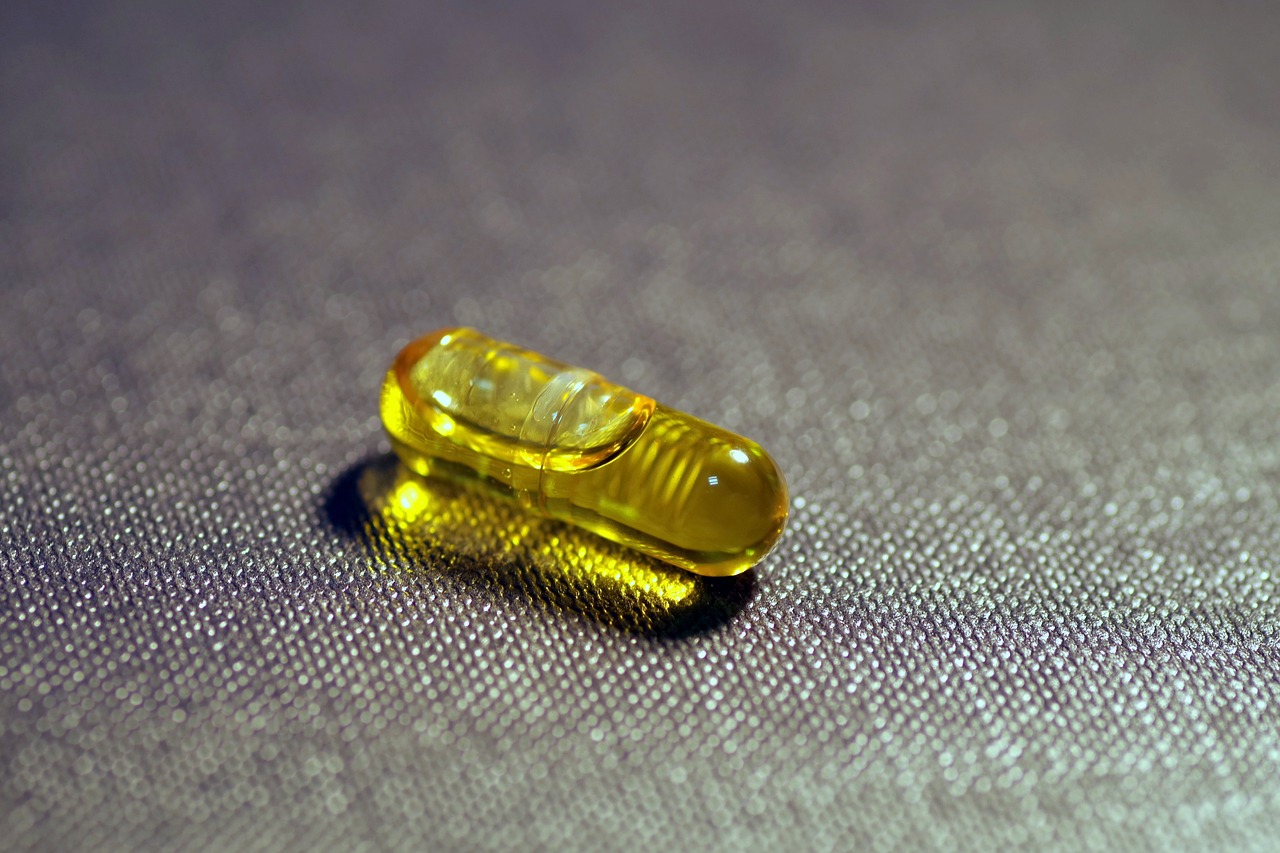
In the world of vitamins and supplements, one distinction that often puzzles many is what is the difference between Vitamin D and D3. While they share similarities, understanding their unique attributes is crucial for making informed health choices.
In this article, we’ll delve into the intricacies of these two essential nutrients, shedding light on their benefits, sources, and roles in maintaining our well-being. However, the choice between Vitamin D and Vitamin D3 may depend on dietary preferences and individual needs, with Vitamin D3 often preferred for supplementation.
Key Takeaways
- Vitamin D and D3 are essential for strong bones, a healthy immune system, and overall well-being.
- Both can be obtained through sunlight, diet, and supplements.
- Studies suggest that Vitamin D3 is approximately 87% more effective than Vitamin D2 in raising vitamin D levels.
- Both Vitamin D2 and D3 are metabolized in the body to the biologically active form, calcitriol.
- Adequate levels of these vitamins are vital for mood regulation.
- They support skin health and can aid in managing skin conditions.
- Maintaining a healthy weight may be influenced by Vitamin D status.
- Consulting with a healthcare professional is advisable for personalized guidance.
The Basics of Vitamin D
What Is Vitamin D?
Vitamin D, often referred to as the “sunshine vitamin,” is a fat-soluble vitamin essential for various bodily functions. It plays a critical role in calcium absorption, promoting strong and healthy bones. While it’s naturally produced in our skin when exposed to sunlight, it can also be obtained from dietary sources like fatty fish, fortified dairy products, and supplements.
Common Sources of Vitamin D
Vitamin D can be obtained from natural sources like sunlight, as well as through supplements. Sunlight is one of the primary sources of Vitamin D for most people. However, not all of us can soak up enough sun, especially during the winter months, making supplements a popular alternative.
- Sunlight: Exposure to sunlight triggers the production of Vitamin D3 in the skin.
- Dietary Sources: Fatty fish, egg yolks, and Vitamin D3-fortified foods.
- Supplements: Vitamin D3 supplements are readily available.
The Importance of Vitamin D
The benefits of Vitamin D extend beyond bone health. It contributes to a robust immune system, helps regulate mood, and supports skin health. Its deficiency can lead to health issues, making it crucial for individuals to maintain adequate levels.
Vitamin D3 is critical for:
- Calcium absorption for bone health.
- Boosting the immune system.
- Regulating mood and reducing the risk of depression.
- Supporting skin health.
What is the Difference between Vitamin D and D3?
Vitamin D and Vitamin D3, also known as cholecalciferol, are related compounds that are important for various physiological functions in the human body. The main difference between them lies in their sources, structure, and metabolism.
Sources:
- Vitamin D: Vitamin D is a general term that encompasses both Vitamin D2 (ergocalciferol) and Vitamin D3 (cholecalciferol). It can be obtained from dietary sources (like fortified foods, fatty fish, and mushrooms exposed to UV light) or synthesized by the skin when it is exposed to ultraviolet B (UVB) sunlight.
- Vitamin D3: Vitamin D3, specifically, is the form of vitamin D that is synthesized in the skin when it is exposed to UVB sunlight. It is also available in some animal-based food sources and can be taken as a dietary supplement.
Chemical Structure:
- Vitamin D: Vitamin D2 and D3 have slightly different chemical structures. Vitamin D2 has a double bond in its side chain, while Vitamin D3 has a more complex structure with a single bond in its side chain.
- Vitamin D3: Cholecalciferol, or Vitamin D3, is the form of vitamin D naturally produced in the skin. It is considered the more effective form when it comes to raising blood levels of vitamin D.
Metabolism:
- Both Vitamin D2 and D3 are converted in the liver to calcifediol (25-hydroxyvitamin D), which is the major circulating form of vitamin D.
- The next step in metabolism involves the conversion of calcifediol to calcitriol (1,25-dihydroxyvitamin D) in the kidneys, which is the biologically active form of vitamin D. Calcitriol regulates calcium and phosphorus absorption in the intestines and plays a crucial role in bone health.
Effectiveness:
- Vitamin D3 is generally considered more effective at raising blood levels of vitamin D compared to Vitamin D2. Some studies have shown that Vitamin D3 is more potent and has a longer duration of action.
- A study published in The Journal of Clinical Endocrinology and Metabolism in 2010 compared the effects of Vitamin D2 and Vitamin D3 on raising vitamin D levels in the blood. The study found that Vitamin D3 was approximately 87% more effective in raising and maintaining vitamin D levels than Vitamin D2.
Vitamin D3 Adequate Intake
Vitamin D3 takes the benefits a step further. It is found to be more effective at raising the blood levels of Vitamin D, making it a preferred choice for those looking to boost their Vitamin D intake. Additionally, it may have extra benefits, including enhanced mood regulation.
Daily Recommended Intake
The recommended daily dosage of Vitamin D varies from one source to another. Such variations in recommendations can sometimes leave people perplexed. The recommended daily intake of vitamin D can vary depending on age, sex, and specific health circumstances. In general, the recommended daily allowances (RDAs) for vitamin D are as follows:
- Infants (up to 12 months): 400-1,000 international units (IU) per day.
- Children and Adolescents (1-18 years): 600-1,000 IU per day.
- Adults (19-70 years): 600-800 IU per day.
- Adults (71 years and older): 800-1,000 IU per day.
- Pregnant and Breastfeeding Women: 600-800 IU per day, although individual needs may vary.
Vitamin D Deficiency and Supplements
Vitamin D deficiency is a widespread health concern, with data suggesting that a significant portion of the population is affected. For example, in the United States, over 40% of adults are estimated to have insufficient vitamin D levels, while the prevalence is even higher among certain groups such as the elderly, reaching 60% or more.
To address this issue, vitamin D supplements are commonly used, and their usage has been on the rise. In fact, a national survey revealed that approximately 20% of all Americans reported taking a vitamin D supplement in 2020. These supplements play a crucial role in mitigating deficiencies, particularly in individuals with limited sun exposure or specific medical conditions, and should be considered in consultation with a healthcare provider to ensure adequate intake and overall health.
Populations at Risk
Certain populations are at a higher risk of vitamin D deficiency, including the elderly, individuals with dark skin, those with limited sun exposure, breastfed infants, people with obesity, and those with certain medical conditions. Studies show that a significant percentage of these groups may have inadequate vitamin D levels, ranging from around 25% in people of Black, Asian, and Minority Ethnic backgrounds in the UK to up to 80% in elderly residents of nursing homes.
Factors such as reduced sunlight, skin type, and health conditions contribute to this risk. If you belong to one of these groups or suspect vitamin D deficiency, it’s advisable to consult with a healthcare professional for personalized recommendation. In the United States, about 40% of elderly adults have a vitamin D deficiency.
Health Benefits of Vitamin D and D3
Vitamin D and D3 offer a range of health benefits, including:
- Impact on Bone Health: Both vitamins aid in calcium absorption, promoting bone density and strength. This is especially important for preventing conditions like osteoporosis.
- Immune System Support: They enhance the immune system, reducing the risk of infections, including the common cold and flu.
- Mood and Mental Health: Vitamin D and D3 play a role in regulating mood, reducing the likelihood of depression and mood disorders.
- Skin Health: These vitamins are essential for maintaining skin health and managing skin conditions.
- Weight Management: Research suggests a link between adequate Vitamin D levels and healthy weight management.
Best Practices for Adequate Vitamin D
- Ensure you get regular, moderate sun exposure for natural Vitamin D production.
- Consume a balanced diet with sources of Vitamin D, such as fatty fish and fortified foods.
- Consider Vitamin D or D3 supplements if you have a deficiency.
- Consult a healthcare professional for personalized guidance on supplementation.
- Monitor your mood and seek professional help if needed.
- Protect your skin from excessive sun exposure to prevent skin damage.
- Maintain a healthy weight through a balanced lifestyle.
Final Thoughts
In summary, while both Vitamin D and Vitamin D3 are essential for human health and share common metabolic pathways, Vitamin D3 is considered the more effective form in terms of raising and maintaining blood levels of vitamin D. It is also the form synthesized in the skin when exposed to UVB sunlight. However, the choice between Vitamin D2 and D3 may depend on dietary sources and individual needs, as both forms can contribute to overall vitamin D status in the body.
These vitamins offer a myriad of benefits, from strengthening bones to supporting your immune system and mood. Whether you choose to soak up the sun, focus on your diet, or consider supplementation, the key is to maintain adequate levels for overall well-being.
Also Read: Revolutionizing Healthcare: Unveiling Medical Breakthroughs and Future Treatments in 2023
FAQs
- Q: What are the main differences between Vitamin D and D3?
- A: Vitamin D3 is a specific form of Vitamin D, with higher bioavailability.
- Q: How can I increase my Vitamin D levels naturally?
- A: Spend time in the sun, consume Vitamin D-rich foods, and maintain a balanced diet.
- Q: Can I take Vitamin D and D3 supplements together?
- A: Yes, but it’s essential to consult a healthcare professional for personalized guidance.
- Q: Are there any side effects of Vitamin D or D3 supplements?
- A: When taken within recommended limits, they are generally safe. Excessive intake can lead to toxicity.
- Q: What is the recommended daily intake of Vitamin D?
- A: It varies by age and individual needs. Consult a healthcare provider for personalized recommendations.
- Can I get enough Vitamin D from sunlight?
- A: The ability to produce Vitamin D from sunlight depends on factors like location, time of day, and skin tone.
- Q: Is there a connection between Vitamin D and certain diseases?
- A: Research suggests links between Vitamin D deficiency and conditions like osteoporosis, heart disease, and diabetes.
#VitaminD #VitaminD3 #SunshineVitamin #HealthSupplements #BoneHealth #SunlightExposure #NutritionFacts #WellnessJourney #HealthyLiving #OptimalHealth
Note: The information provided in this article is for educational purposes only and should not be taken as medical advice. For personalized health recommendations, it is always advisable to consult with a healthcare professional before incorporating any changes to your daily health routine.







No comment yet, add your voice below!